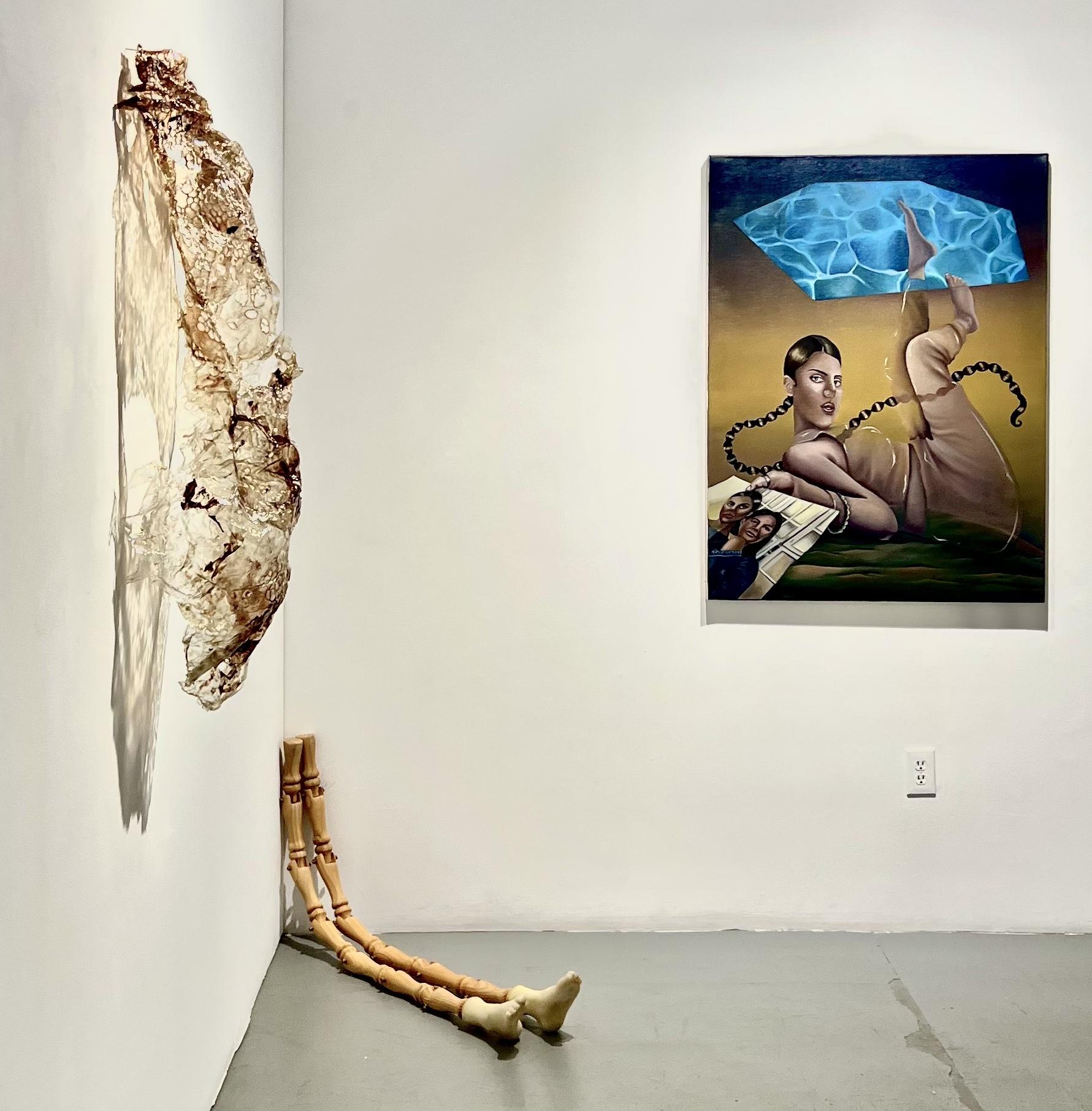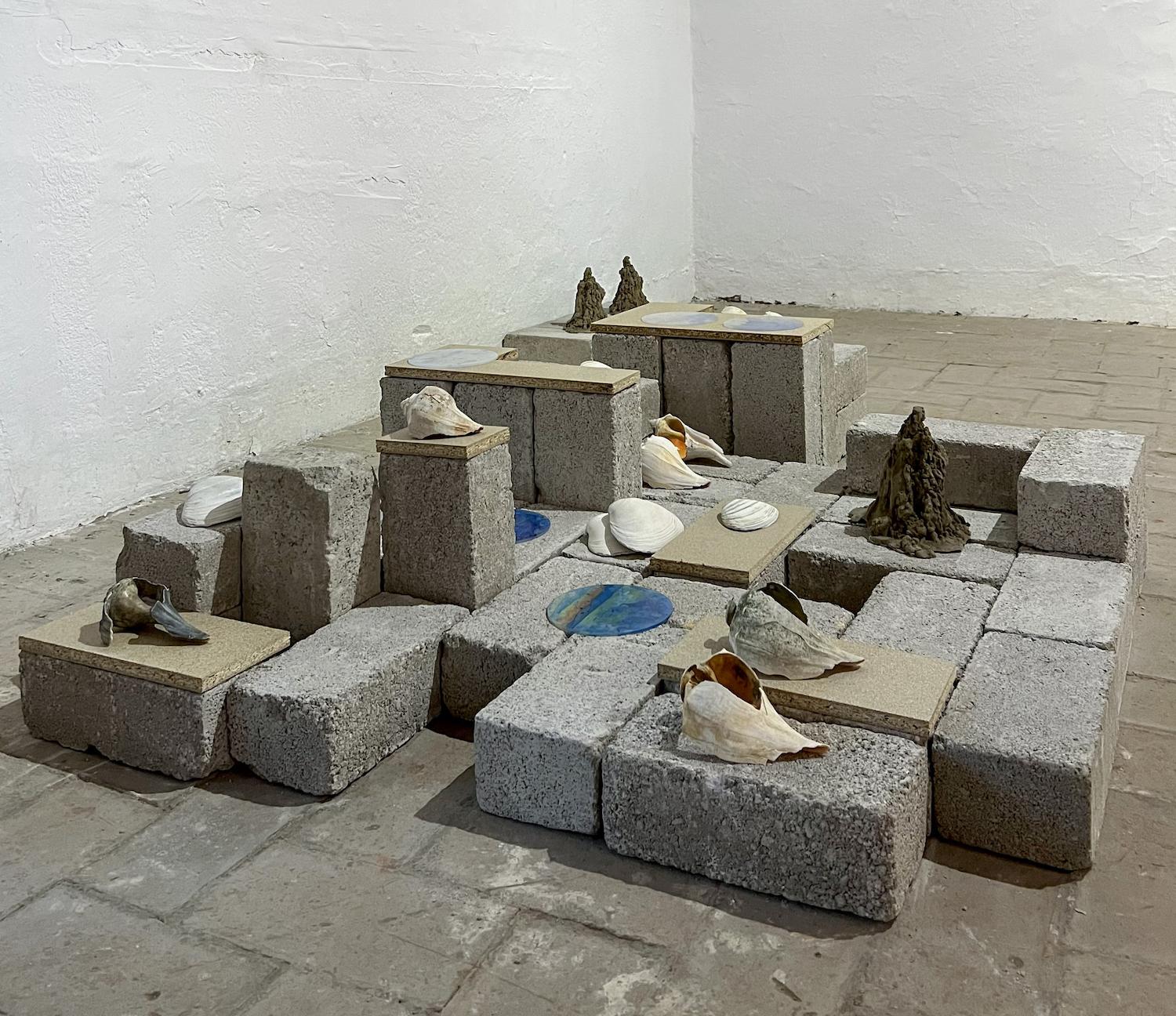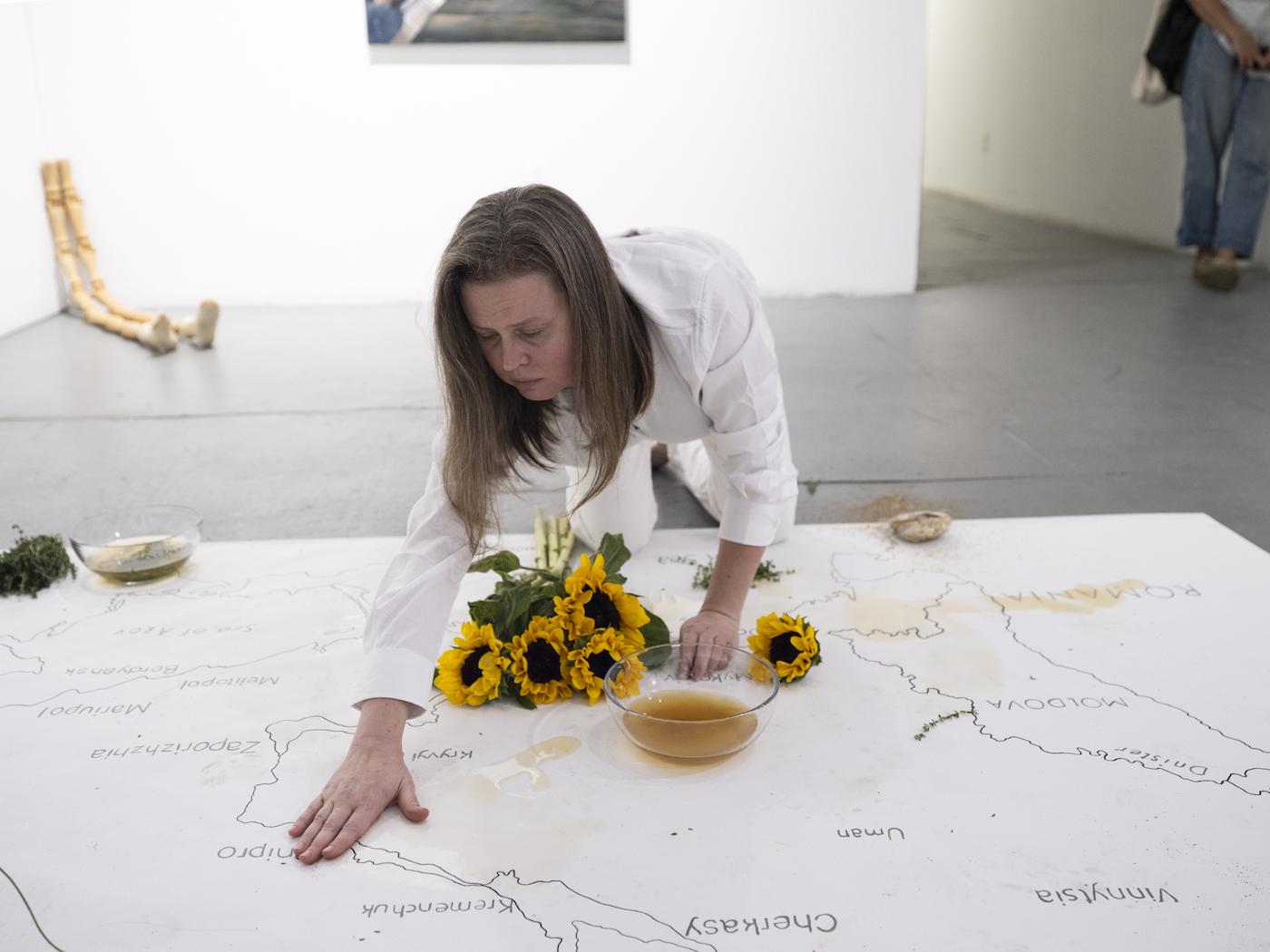Water-bound Semiotics of Displacement and Refuge


I wonder if the curators were thinking about Millais’s “Ophelia,” as the exhibition “Enmeshed, Dreams of Water” almost closely encapsulates the aesthetic tenor of this Pre-Raphaelite painting. Its beauty hinges on imminent mortality, vulnerable beauty, psychological perturbation, and an estranged representation of nature as a place where life and death are bound to coexist.
Representing a similar set of botanic and aquatic motifs, the exhibition taps into migration through the spirit of constant self-searching, resistance, and adaptability by presenting the work of U.S.-based immigrant artists Keren Anavy, Sanié Bokhari, Magdalena Dukiewicz, Carlos Franco, Kathie Halfin, Bonam Kim, Umber Majeed, Jamie Martinez, Jonathan Ojekunle, Sa’dia Rehman, Leila Seyedzadeh, and Masha Vlasova. As part of The Immigrant Artist Biennial’s 2023 edition “Contact Zone,” the group show brings together a cohort of artists from twelve different countries and is currently on view at NARS Foundation.

In the exhibition, the intersection of migration, regeneration, and interconnectivity is so complex that it calls for a material metaphor—water. Everything flows: as the viewer walks past Leila Seyedzadeh’s “The Landscape of My Voice – East River” (2023), their coat or dress stirs the air around the semi-translucent fabric, making it vibrate ever so slightly in resonance with the spectator’s presence. Saffron and indigo, the two natural pigments used for dying the fabric, engages with not only Iran’s textile traditions but also larger considerations like sustainability and domesticity. Accompanied by a poem that reads: “You flow through the Alborz mountains / When you reach Tehran, you rain,” the sculpture is embellished by gold chains fabricated according to Seyedzadeh’s voice frequencies when reading the poem. Water, like language, chronicles the experience of transmigration as it carries its own body across terrains: it vaporizes, travels through the wind, and rains down to a foreign soil.

The two video works by Masha Vlasova and Umber Majeed situate water in opposing contexts: Vlasova frames “Boundary Waters” as the ecological picturesque, citing compositional techniques such as reflexivity and symmetry, while Majeed produces a digital or fictional body of water using a green screen, making bodily navigation in water nearly comical, as the two actors remain “locked into a designated space” in a slow scuffle with a simulacrum. The humor almost suggests a lamentation over how people are now alienated from the spontaneity of activities that nature has to offer. Are ‘bodies’ of water economic, geographic, or even natural? With its high water content, can we say that the human body is literally a ‘body of water’? It seems futile to define and bound up borders of water as national territories, when water on earth is essentially an interconnected system that defies attempts of isolation.
In this way, by complicating the word “body” as a starting point for interpretations, select works in the show address actual figuration or include body parts. As the protagonist in Bokhari’s painting disappears into an imaginary terrain of memories and myth, Ojekunle reflects on perseverance and optimism through the portrayal of his half-lit figure. Kim’s life-sized legs, hinting at the non-universality and arbitrariness in international systems of measurement, echo an aesthetic of fragmentation while commenting on the ways in which immigrants are expected to mitigate fundamental cultural differences, many of which are unforeseeable. For Dukiewicz, who creates work using her own blood and hair, the body is a site of trespassing and provocation to established, conventional, and austere mediums.

The body goes beyond the human and into the marine. Willfully childlike and seemingly unskilled, Martinez’s purple-eyed octopus reaches out to a dream of prophecy and spirituality with its six tentacles. Anavy’s architectural installation portrays how marine creatures and concrete blocks interact with each other at the cornerstone of urban infrastructure and water supply networks, “cultural spaces and their liminal borders.” And then there are also bodies of architecture. Sa’dia Rehman’s monotypes merge moss-like plants with constructions such as mosques, gravestones, and shrines. Puerto-Rican-born artist Franco digitally manipulates the imagery of a fence, vines, and the view onto a street with a hint of voyeurism. The work’s title, “Encancarabublado,” alludes to Ana Lydia Vega’s 1982 short story bearing the same name (“Three Men and a Boat”)—a story of three male Caribbean migrants. According to Dr. Mariana F. Past, many discussions surrounding this text contest with whether the three men, coming from Haiti, the Dominican Republic, and Cuba, “can most aptly be sited in ‘the same boat,’ geopolitically speaking; not in the same boat; or in an indeterminate imagined space somewhere in between.” This recurring issue of migration, change, and unstable identity takes us back to the show’s central concern via the water-bound semiotics of displacement and refuge.

Tying together the themes of this exhibition, Ukrainian-born interdisciplinary artist Kathie Halfin delivers a powerful performance, “The Body of Water and Land,” in which she selects four plants based on their symbolic meanings of peace, community, and communal legacies. As she narrates the histories and journeys of each plant, she picks up herbal essences, smears them onto a map of Ukraine, and physically interacts with the plants in alternating states of meditative slow-motion and of agitation. As she treads through the map, muddying it with colored herbal essences, footprints, and pieces of plants, we are left with a messy history metaphoric of modern-day colonialism. The morphology behind these motifs of organic fecundity really points to two divergent directions: one of destruction and the other of revitalization—it is up to every participant of history to determine which route to pursue.
In a way, “Enmeshed, Dreams of Water” is an ambitious exhibition, encompassing a wide range of mediums from figurative paintings to sculptures, from performance to video. It introduces the migrant status as something omni-historical—an ongoing state of seeking that constitutes a unifying diasporic experience, but cannot be reduced to a set of qualitative judgments. It’s like an autobiography that omits the word “I.” It’s like encountering the everchanging-ness of water at different points of suspension. Merging the aquatic, the corporeal, and the geopolitical, a dream of water is weaved in the spirit of generativity.
Enmeshed, Dreams of Water is on view at NARS Foundation until November 1, 2023 at 201 46th St, Brooklyn, NY 11220. Art Spiel and Cultbytes are, for the second time, proud media sponsors of the biennial, and this review series is published as part of TIAB’s writer’s residency generously supported by Lesley Bodzy Studio and Fraser Birrell Grier, Esq.
You Might Also Like
Art Historian in Kyiv Reads Excerpts From Her War Diary at Fundraiser for Ukraine
What's Your Reaction?
Xuezhu Jenny Wang is a multilingual translator and content creator. In addition to writing about postwar and contemporary visual culture, she is working on a research project that focuses on mid-century interior design and mechanization.

